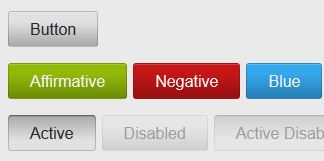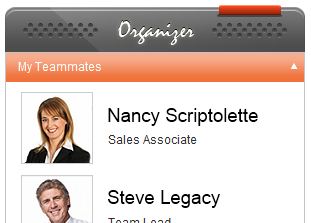JavaScript frameworks for mobile applications
Choosing frameworks with visual effects similar to the appearance of native applications on all mobile devices.
Do I need to use HTML 5 for mobile
applications? There are also disadvantages. Loading pages to the Internet is slower than on the local system. Although if the application uses a database, in any case, you will have to wait for access to the database on the server. And there is an offline mode. But first of all, it will not enter the AppStore and will greatly lose visibility.
And there are pluses too. You don't have to pay 30% Apple royalties and wait to be included in the store. The app will also be available on all systems, which can compensate for the loss of AppStore visibility.
If there is a way to declare your application, for example, a site, you can do without a store.
The HTML 5 platform is better suited for some applications, including services and content media. It is less suitable for others, like games and all gadgets that use sensors and other tools included in the smartphone. Currently, less and less, as technological advances will make HTML 5 faster and more complete (see bookstores at the bottom of the page).

Enyo 2
Originally developed for webOS, it is actually wearable and licensed by Apache. An application running with this SDK can run on the desktop, on iOS, Android or WP, or on webOS, which is the closest Linux system to the desktop, waiting for Tizen. Therefore, you can consider very portable applications.
The sampler allows you to see Onyx theme widgets online. The appearance of the application, thanks to visual effects and container and widget components, is close to the appearance of the native Android application, as seen in this image.
Enyo generates HTML code from code similar to JSON, which is more convenient, according to the authors. This actually depends on the share that is given to the interface and functions, since the interface is less readable in this form.

Kendo UI Mobile
Based on jQuery and CSS, this is an addition to the existing framework - a set of widgets ready to use for HTML application 5.
Like all other frameworks on this list, it is mobile. The standard version, Kendo UI was not developed for mobile devices, so it allows you to create universal applications without using features specific to mobile devices, unlike Enyo. For this, a specialized version was created that provides widgets identical to the native elements of iOS and Android.
Kendo uses JSON code to assign data to an HTML element and initialize it, but unlike Enyo, it does not generate HTML code, but is appended to it.
Own reality
Applicable to creating your own applications. But the provisions can be deterrent, particularly in relation to patents, in the US. If you can handle it, you'll also have a special React Native IDE, Nuclide.
Other frameworks
- jQuery Mobile. Ajax framework for creating mobile applications.
Backend and utilities
- Fast button. This is not another infrastructure, but an additional tool. It allows you to create HTML applications with the same smoothness as your own applications. Courtesy of Google
- Fastclick. If the mobile browser responds to user requests late, this store will work and delete time. Check with caution and conditional instructions to make sure we are on a cell phone. Compared to Google's Fast button.
- Backbone.js. Provides a common model-based framework for mobile applications.
- Cordoba. To create your own mobile applications with HTML interface 5. Can be used with another framework. Became an interface to webOS hardware, but also works on Android, iOS, Windows 8, Tizen.
PhoneGap is a Codova distribution with additional tools for Adobe products. - WebAPI. Mozilla offers APIs for all systems and browsers, especially for mobile applications.
See also
- Canvas textbook. Learn how to put graphics in your browser.
- HTML frameworks 5. Gaming, multimedia and other specialized applications.